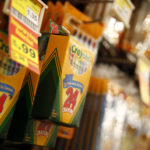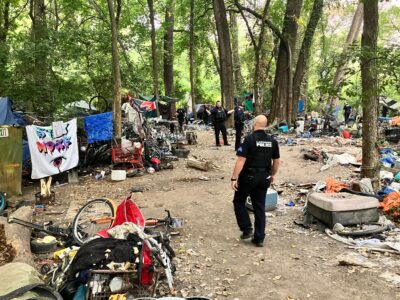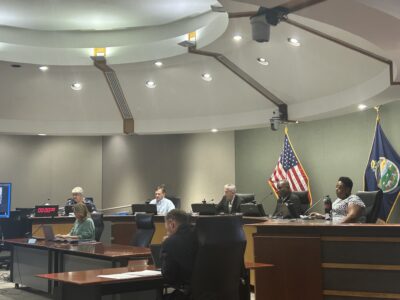Baker Wetlands Discovery Center to open soon

An aerial view of the new Baker Wetlands Discovery Center.
Roger Boyd, education coordinator at the Baker Wetlands, estimates that a dedicated and diligent bird watcher might be able to spot about 150 different species at the Baker Wetlands over the course of a year.
“If you worked really hard at it you might see 165,” he said.

The Baker Wetlands Discovery Center, 1365 North 1250 Road
Try as they might, however, the bird-watchers would still fall far short of seeing all 278 species of birds that can found in the wetlands. And then of course there are still the hundreds of distinct plants and dozens of fish, amphibians, reptiles, mammals and more that the area has to offer.
On Sept. 30, Baker University will hold an invitation-only ribbon cutting for the $1.5 million, 11,000-square-foot Baker Wetlands Discovery Center, 1365 North 1250 Road. Public open houses will follow shortly after on Oct. 3 and 4, Boyd said.
For some time the wetlands have been closed off because of the construction of the South Lawrence Trafficway, but once the Discovery Center opens up, the area will be prepared to receive elementary on up to college students and interested members of the public, Boyd said.

A map of the Baker Wetlands on display in the Discover Center.
“It’s a focal point. This is about the last wetlands in Douglas County,” he said. “They can learn about the value of the wetlands, why they’re important to save and that being in nature is fun.”
Put simply, a wetland is any place that doesn’t drain well, Boyd said. To fit the bill the area must be less than 6 feet deep and hold water for part of the year.

From left, Roger Boyd and Jon Boyd talk about the new Baker Wetlands Discovery Center, 1365 North 1250 Road, which will host open houses Oct. 3 and 4 before opening to the public on Oct. 5.
Wetlands are often drained and put to agricultural use, Boyd said. This eliminates or displaces the wide variety of plants, insects, birds and mammals that typically live in the area, disrupting the natural environment.
Boyd’s father was the first in the family to work on the Baker Wetlands, and Boyd’s son, Jon Boyd, works as director, continuing the family legacy.

The Baker Wetlands Discovery Center, which will open to the public Oct. 5, features a telescope, which can be used to view the night skies away from the city lights.
Inside the Discovery Center, attendees will find multiple information boxes, teaching them about the land and the ecosystem, Jon Boyd said.
From the lifecycle of a beaver to the plant life and the benefits of wetlands, Jon Boyd said each informational stop is meant to be quick, easy to read and, of course, interesting.
The center will also feature a telescope to study the night sky away from the lights of the city, a large, multi-use classroom, research laboratory, maintenance shop, conference room and more, Jon Boyd said.

An aerial view of the new Baker Wetlands Discovery Center.
A boardwalk has also been built so visitors can take a stroll through the wetlands, he added.
The Discovery Center itself is bermed into the ground, uses geothermal heating to stay cool in the summer and warm in the winter and is equipped with solar panels, making the entire facility environmentally friendly, Roger Boyd said.
Although the Discovery Center is set to open shortly, access to the entire wetland area will remain limited as construction of the South Lawrence Trafficway project continues, the Boyds said. But as time moves on, more and more of the wetlands will become open to the public.
The center’s open houses will run from 9 a.m. to 4 p.m. on Oct. 3 and 1 to 4 p.m. Oct. 4, Roger Boyd said. The public is encouraged to come check out the facilities before they officially open for business Oct. 5. Normal hours will run from 9 a.m. to noon and 1 p.m. to 3 p.m. each weekday. The entire facility is free and open to the public.






